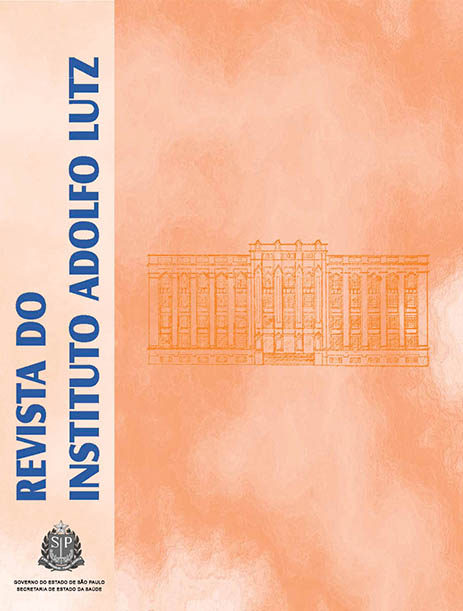Variability of fat content and fatty acid composition in oil of dwarf coconut palm at its maturation time
Keywords:
coconut, dwarf coconut, Cocos nucifera L, pulp, fat, fatty acids
Abstract
Coconut palm has been considered “the tree of life” since several products have been feasible to beobtained, especially from its fruits. In the present study, the fat content and the fatty acid compositionwere determined in the pulp of dwarf coconut (six cultivars, aged from 6 to 12 months), cultivated in CampoExperimental do Betume, EMBRAPA, Neopolis City, Sergipe State, Brazil. Fat content was evaluated bySoxhlet technique , and fatty acid profile was determined by means of gas-chromatographic technique. Allof the samples presented low amounts of fat, increasing the fat level in proportion to the age until 11months (25.4 g/100 g). Red dwarf coconut pulps from Cameroon and Malaysia revealed high content oflauric acid (from 38.1 to 49.6 g/100 g of oil), providing its use for soap manufacturing and detergentindustries.Key WordsReferences
1. American Oil Chemists’ Society. Official methods and
recommended practices of the American Oil Chemists’ Society.
4 th ed. Champaign, USA, A.O.C.S., 1995 (A.O.C.S. Official Method
Ce 1d-91: Determination of fatty acids in edible oils and fats by
capillary liquid chromatography (GLC).
2. Andriguetto, J. M. Nutrição animal. 4 ed., São Paulo: Nobel; 1981.
v.1, p.90-8
3. Bailey’s Industrial Oil and Fat Products. Fatty acids in newer fats and
oils. In: Hui, Y.H. (ed). Edible oil and fat products: general
application. New York: Wiley-Interscience; 1996. v.1, p.429.
4. Balachandran, F. M.; Arumughan, C.; Mathew, A.G. Distribution of
major chemical constituents and fatty acids in different regions of
coconut endosperm. J. Am. Oil Chem. Soc., 62(11):1583-6, 1985.
5. Bliska, F. M. de; Leite, R. S.; Savitci, L.A. O coco no Brasil – Aspectos
econômicos e de mercado. Colet. ITAL, 25 (1): 81-105, 1995.
6. Ferreira, J. M. S.; Warwick, D. R. N.; Siqueira, L. A. (eds.) Cultura do
coqueiro no Brasil. Aracaju, EMBRAPA-SPI, 1994. 300 p.
7. Gomes, F. P. Curso de estatística experimental. São Paulo: Nobel;
1985. 466p.
8. Instituto Adolfo Lutz. Normas analíticas do Instituto Adolfo Lutz.
3a.ed., São Paulo: IMESP; 1985, p. 42-3, 266.
9. Kapseu, C. et al. Huiles de coco et de palmiste: source d’acide gras
laurique. Riv. Ital. Sostanze Grasse, 74(5): 205-8, 1997.
10. Laureles, L. R. et al. Variability in fatty acid and triacylglycerol
composition of oil of coconut (Coconut nucifera L.) hybrids and
their parentals. J. Agric. Food Chem., 50:1581-6, 2002.
11. Mazzani, B. Plantas Oleaginosas. Barcelona: Ed. Salvat; 1963,
380p.
12. Persley, G. J. Replenting the tree of life: Towards an
International Agenda for Coconut Palm Research. Wallinggard:
CAB/ACCAR; 1992, 156p.
13. Santoso, U. et al. Nutrient composition of kopyor coconuts (Cocos
nucifera L.). Food Chem., 57(2):299-304, 1996.
14. Sobral, J. P. Composição química e digestibilidade do farelo de
coco. Piracicaba, 1976, 62p. [Dissertação de Mestrado-Escola Superior
de Agricultura Luiz de Queiroz-Universidade de São Paulo].
15. Steel, R. G. D.; Torrie, J. H. Principles and procedures of
statistics a biometrical approach. New York: McGraw-Hill; 1980.
633p.
16. Tavares, M. et. al. Estudo das características físicas e químicas de
coco ralado comercializado a varejo e de coco in natura com relação
aos parâmetros legais vigentes. Rev. Inst. Adolfo Lutz, 56(1): 105-
12, 1996.
recommended practices of the American Oil Chemists’ Society.
4 th ed. Champaign, USA, A.O.C.S., 1995 (A.O.C.S. Official Method
Ce 1d-91: Determination of fatty acids in edible oils and fats by
capillary liquid chromatography (GLC).
2. Andriguetto, J. M. Nutrição animal. 4 ed., São Paulo: Nobel; 1981.
v.1, p.90-8
3. Bailey’s Industrial Oil and Fat Products. Fatty acids in newer fats and
oils. In: Hui, Y.H. (ed). Edible oil and fat products: general
application. New York: Wiley-Interscience; 1996. v.1, p.429.
4. Balachandran, F. M.; Arumughan, C.; Mathew, A.G. Distribution of
major chemical constituents and fatty acids in different regions of
coconut endosperm. J. Am. Oil Chem. Soc., 62(11):1583-6, 1985.
5. Bliska, F. M. de; Leite, R. S.; Savitci, L.A. O coco no Brasil – Aspectos
econômicos e de mercado. Colet. ITAL, 25 (1): 81-105, 1995.
6. Ferreira, J. M. S.; Warwick, D. R. N.; Siqueira, L. A. (eds.) Cultura do
coqueiro no Brasil. Aracaju, EMBRAPA-SPI, 1994. 300 p.
7. Gomes, F. P. Curso de estatística experimental. São Paulo: Nobel;
1985. 466p.
8. Instituto Adolfo Lutz. Normas analíticas do Instituto Adolfo Lutz.
3a.ed., São Paulo: IMESP; 1985, p. 42-3, 266.
9. Kapseu, C. et al. Huiles de coco et de palmiste: source d’acide gras
laurique. Riv. Ital. Sostanze Grasse, 74(5): 205-8, 1997.
10. Laureles, L. R. et al. Variability in fatty acid and triacylglycerol
composition of oil of coconut (Coconut nucifera L.) hybrids and
their parentals. J. Agric. Food Chem., 50:1581-6, 2002.
11. Mazzani, B. Plantas Oleaginosas. Barcelona: Ed. Salvat; 1963,
380p.
12. Persley, G. J. Replenting the tree of life: Towards an
International Agenda for Coconut Palm Research. Wallinggard:
CAB/ACCAR; 1992, 156p.
13. Santoso, U. et al. Nutrient composition of kopyor coconuts (Cocos
nucifera L.). Food Chem., 57(2):299-304, 1996.
14. Sobral, J. P. Composição química e digestibilidade do farelo de
coco. Piracicaba, 1976, 62p. [Dissertação de Mestrado-Escola Superior
de Agricultura Luiz de Queiroz-Universidade de São Paulo].
15. Steel, R. G. D.; Torrie, J. H. Principles and procedures of
statistics a biometrical approach. New York: McGraw-Hill; 1980.
633p.
16. Tavares, M. et. al. Estudo das características físicas e químicas de
coco ralado comercializado a varejo e de coco in natura com relação
aos parâmetros legais vigentes. Rev. Inst. Adolfo Lutz, 56(1): 105-
12, 1996.
Published
2004-12-30
How to Cite
ARAGUÂO, W. M., CRUZ, E. M. de O., TAVARES, M., RIBEIRO, F. E., TUPINAMBÁ, E. de A., PIMENTEL, S. A., & TAKEMOTO, E. (2004). Variability of fat content and fatty acid composition in oil of dwarf coconut palm at its maturation time. Revista Do Instituto Adolfo Lutz, 63(2), 159-67. https://doi.org/10.18241/rial.v63i2.34843
Issue
Section
ORIGINAL ARTICLE










